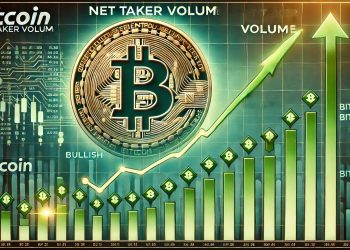After leaving the National Prayer Breakfast at the Capitol earlier this month, President Donald Trump and his entourage slipped into the imposing ballroom at the Washington Hilton, where the real show was about to begin.
At the “unofficial” event on February 6, organized by the powerful and insular evangelical group known as “the Family,” Trump took a victory lap before the crowd of largely white evangelicals. These were the voters that had thrust him into power and they were eager to celebrate the rash of executive orders reversing decades-old civil rights advances.
“I don’t know if you’ve been watching but we got rid of woke over the last two weeks. Woke is gone-zo,” Trump said, to applause. “We’re a merit-based society now.”
With an assist from Elon Musk and his DOGE squad, Trump has made the elimination of diversity, equity, and inclusion a centerpiece of his new administration. For all the crowing about his early success — much of it greatly overinflated — Trump has simply flipped the script: Instead of creating a level playing field, he launched DEI for white Christians.
“They’ve stumbled on a winning strategy, which is to portray white people as victims.”
Trump’s bid to dismantle the legacy of the civil rights movement while using its own language is part and parcel of the Christian right’s playbook, according to Christine Reyna, a psychology professor at DePaul University who studies extremism.
“They’ve stumbled on a winning strategy, which is to portray white people as victims and portray their movement as a civil rights movement,” Reyna said. “And they’ve completely co-opted the strategies of the Black civil rights movement.”
At the prayer event that morning, Trump announced the latest gift to his right-wing evangelical supporters: a task force on “anti-Christian bias,” helmed by his new Attorney General Pam Bondi.
“[T]he task force will work to fully prosecute anti-Christian violence and vandalism in our society and to move heaven and earth to defend the rights of Christians and religious believers nationwide,” he said.
Trump’s war on “woke” is a realization of decades of political organizing that has always had civil rights in its crosshairs. Despite rhetoric about religious liberty, backsliding on civil rights and the far-right push to usher in a Christian theocracy are inextricably linked — and they always have been, according to Brad Onishi, a professor of religion at the University of San Francisco.
“There has been a war on the representation of rights of people they think don’t deserve them or at least don’t deserve to be at an equal seat of the American roundtable,” said Onishi, himself a former evangelical Christian. “It’s something that’s 60 years in the making.”
A Longtime Target
While discussions of the Christian right often focus on the Supreme Court’s 1973 Roe v. Wade decision as its origin story, the issue that truly launched the movement was integration.
In 1976, the Internal Revenue Service revoked the tax-exempt status of Bob Jones University, a fundamentalist college that banned interracial marriage on “religious grounds” and, until 1971, excluded Black applicants entirely.
The case, which eventually made its way to the Supreme Court along with similar efforts to desegregate religious institutions catalyzed white Christian outrage. Groups like the Moral Majority sprung up in defense of segregation, capitalizing on white evangelicals’ feelings of grievance.
Although later, Moral Majority Founder Jerry Falwell Sr. would argue that Roe had been his breaking point, scholars have noted that the emergence of these efforts, including Falwell’s, began before Roe and only incorporated anti-abortion stances into their platforms in the late 1970s.
Like Trump, these organizations combined a promise of the restoration of Christianity to dominance in American political life with a staunch opposition to integration and other socially liberal trends in American life.
“The great white Christian flight from the Democratic Party to the Republican Party occurred primarily because the Democratic Party became the party defending the civil rights of Black Americans in this country,” said Robert P. Jones, founder of the Public Religion Research Institute and author of “The Hidden Roots of White Supremacy and the Path to a Shared American Future.”
Now, said Jones, “the two political parties have essentially sorted themselves along ethno-religious lines.”
From Grievance to Policy
Over the last month, Trump has moved swiftly to turn white evangelicals’ grievances into policy.
In a series of executive orders, the president undid decades worth of civil rights protections for marginalized communities brick-by-brick. He froze the civil rights division of the Department of Justice, eliminated all DEI roles in the federal government, and dismantled equal opportunity executive orders barring racial discrimination in employment.
On the flip side, he formed the Anti-Christian Bias Task Force — announced with fanfare at “the Family’s” prayer breakfast — and re-instituted the White House Faith Office, a bureau led by televangelist Paula White that consults religious leaders on policy.
“What’s especially powerful about this tactic is that civil rights laws already exist.”
Reyna, the DePaul professor, said that there’s a legal benefit to couching the far right’s movement in the terms of civil rights.
“What’s especially powerful about this tactic is that civil rights laws already exist. They already are fundamental to our legal system,” said Reyna. “So if they could find a way to leverage those existing laws in order to protect whiteness in America, they’re going to be more likely to be successful.”
Trump is by all accounts not a pious believer. He can, however, leverage evangelical grievances for support at the ballot box — and perhaps beyond.
“We essentially have kind of a MAGA-controlled Republican Party, that is, both in terms of its ideas and its demography, a white Christian Nationalist Party,” said Jones, of the Public Religion Research Institute. “The end game is the installation of an authoritarian regime that’s about power and money and an oligarchy — and the ultimate end of that is the end of American democracy as we know it.”




















